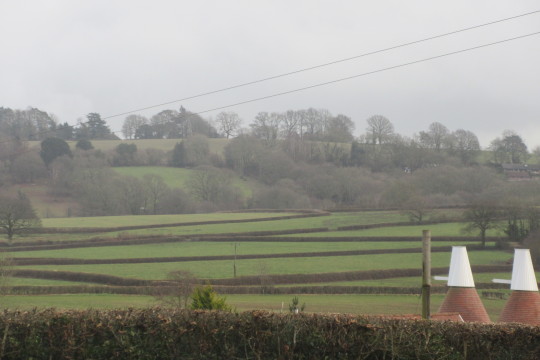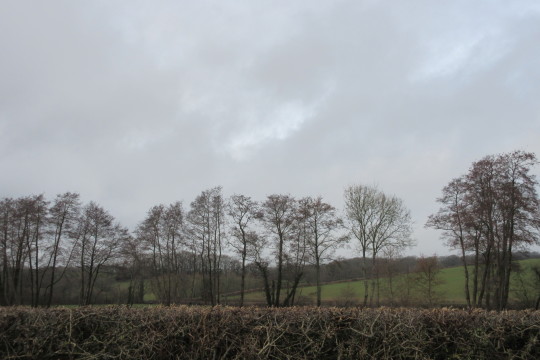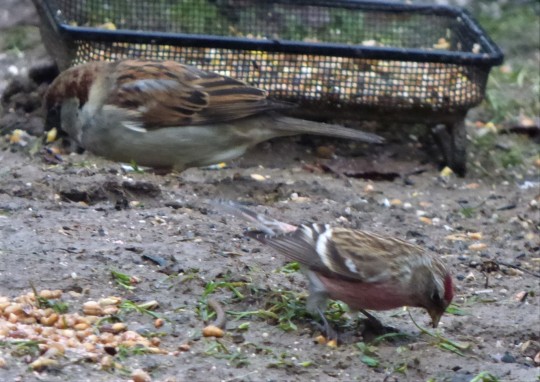#pollen over ponds poll
Text
Tuesday 16th February 2021
Normal Service and some Out of the Ordinary News
I’ve got to say that I don’t quite know where my head is at lately, let’s blame disturbed sleep shall we - might as well. I’ve been doing my customary waking around 2-3am and then napping, waking again around 5-6ish for the day and watching the cricket, which has taken up the best part of the morning. Although that makes the days seem long, they’ve been full and my blog has ended up being written piecemeal here and there and then being rather last minute. Inevitably errors occur when you write that way and I haven’t made the time to read through properly before pressing post. Usually I’m fairly meticulous, but I’ve ended up rushing, so I’ve resolved to do better. Side-note to both my football and the England crickets teams, you should do the same. Liverpool FC play tonight in Hungary, 8pm our time should you need to know (Champions’ League)
Yesterday was a very dull and grey day, cold, but not nearly as cold as of late. We had to go out to the Pharmacy and so took the car on a run just for the sake of keeping it in action.

We came back via the village where the younger Ms NW went to school and it was a very neat little journey. The hedges have had a really good cut.

It was just around this point in the lane where Crow and I did our second synchronised Woaaaaaa Woaaaaaaa of the week so far - that always makes us laugh. The first had been at a low level swoop behind our top shrubbery bed - couldn’t see what it was, but we thought it was the Buzzard. Yesterday it was an absolutely gorgeous Kestrel that flew from one side of the lane across the front of the car and off into the distance. We saw enough to register the lovely markings and beautiful chestnut colouring. I took a few other pictures of some nice looking cows and a field absolutely covered by Seagulls but to be honest they’re not all that exciting, so I’ll just leave the thoughts there.
What was exciting yesterday and I’ll go so far as to say, terribly exciting, was a brand new bird in the garden. Seriously, I can hardly believe it, so settle down and enjoy with me one of the most delightful and tiniest birds we’ve had here.
Let me set the scene, I was standing at the sink under the window, just pootling about and tidying things and a bright flash of red took my eye. I presumed Goldfinch, which would’ve been unusual as it’s been a while. But no, it wasn’t that pillar box type of red, it was more a deep and bright ruby pink. Chores abandoned and camera at the ready I took as many photos as I could considering that A) it was quite poor light and it was drizzling and B) this little bird hardly stayed still. Suffice to say I have A LOT of very blurry pics.
Enough introductory waffle, this is what I saw

Ladies and Gentlemen, a Redpoll. I have to say that its Latin name is absolutely charming. Carduelis cabaret. Isn’t that wonderful? It certainly lives up to that descriptor in my opinion, as every angle is a feast for the eyes.
Wikipedia says
The genus name Acanthis is from the Ancient Greek akanthis, a name for a small now-unidentifiable bird, and cabaret is the French name for a type of finch
That turns out to be somewhat disappointing really. I prefer to stick to my imaginary idea of them being an actual theatre show-stopper.
Anyway after establishing the Redpoll bit, as so often in the birding world (and the rest of the natural world to be fair) it all gets rather complicated.

For size perspective: House Sparrow and Redpoll. I said they’re tiny didn’t I
The full name for this species is actually the Lesser Redpoll, as relatively recently (year 2000) it was classified as a separate species from the very similar Common Redpoll (also called the Mealy Redpoll) which, despite the name, is not common in the UK at all.
Lesser Redpolls breed in the UK, whereas Common Redpolls are winter visitors only and generally just to the eastern side of the UK. There are subtle differences only between the two species, but it is the Lesser Redpoll that’s much more likely to be seen in gardens across the UK.
I’ve put a really excellent video towards the end of this blog which should make things clearer.
As you can tell from the shape of the bill, Redpoll is a Finch, a small Finch. This is particularly interesting as I keep bemoaning how we lack Finches here and yet last year we saw more Goldfinch in the garden than we ever have before; not big numbers, but more frequent visits. We had the return of a Greenfinch and evidence they’d had young and of course, lately a male Chaffinch has been here a lot. Apparently Redpoll will often flock with Siskin - another relatively common bird, but again, one we’ve not spotted in our garden. There’re probably loads in the woods who only come to the garden when we turn our backs!
SIZE GUIDE:
1.5–12.5 centimetres (4.5–4.9 in) long with a wingspan of 20–22.5 centimetres (7.9–8.9 in) and a weight of 9–12 grams (0.32–0.42 oz). The bill is short, conical and sharply pointed and is pale yellow with a dark tip.

Little Lesser Red Poll making the distant Robin look huge
Obviously all the information I have is collated from various searches I made on the internet: I read that the UK population of this lovely bird went into rapid decline since the 1970s and now stands at about 10% of the known figures at that time. There is no sound evidence currently available as to why, but studies have focused on the reduction in young forestry plantations, especially non-native Conifers (a favoured nesting location) and possibly a lessening of Birch trees. To counter that though, I have also read that since around 2010 there has been a marked increase in sightings in gardens. In the Spring the Redpoll will feed on insects and source caterpillars for its young, but in the Autumn and Winter it’s a seed eater, particularly enjoying the fine Niger seed which is suited to its small beak. It seems more people are feeding the birds in their gardens and Niger seed in particular is being employed more frequently as it attracts the colourful little birds.

Lesser Redpoll GB breeding population was estimated at around 220,000 breeding pairs (2016) but they are doing particularly well these days in N Ireland which boasted an additional 40,000 pairs.
The species is now listed as red status in the UK (see below)

Absolutely beautiful from every angle

You can just make out a small black bib in the photo above and from what I’ve read this is a male bird already displaying breeding colours, as seen by the extremely red-pink breast. It could be said it’s fairly ahead of the game with its timing.
More information from an outside source Here (pdf) which is a British Birding Association article from 2010 with some excellent photographs.
youtube
LISTING STATUS EXPLAINED:
The Red Listed birds are not necessarily terribly low in number - for example the Common House Sparrow. Starling and Song Thrush are in this category because of population decline.
Red List Criteria
Globally Threatened
A Serious Population Decline In The UK Between 1800 And 1995
A Decline Of At Least 50% In The UK Breeding Population Over The Last 25 Years Or Over A Longer-Term Period
A Contraction Of At Least 50% In The UK Breeding Range Over The Last 25 Years Or Since 1969
The RSPB say
"We use the red list to prioritise our action. We use it to identify which species need help immediately and take action. So, if there is research to do to find out what the problem is, and how to tackle it, then we’ll do that, then once we know what needs to be done to help them we’ll get on with it, whether it’s land management, species recovery projects or lobbying government.
"Prioritising is vital as we don’t have money and resources to work on everything, even within the red list we can’t prioritise action for all 67 species. In some cases we have to just keep a watching brief on a species until we have more resource to take action."
"The first step is considering what to do in your own outdoor spaces to create better habitats for wildlife. Those who have a garden could consider wildlife friendly gardening - create a pond, plant pollen rich flowers, or plant shrubs with berries for birds.
"Most of the data we use is collected by volunteers –if you know a little bit about birds you could get involved in data gathering with monitoring schemes, such as those run by the BTO in partnership with the RSPB."
I’m going to have a think about what projects we can embark on this Spring to help our garden birds even more and then, well, who knows what species might turn up. Even after 20 years here, there’s something to marvel at every single day.

WHAT ELSE DID I LEARN TODAY?
Mount Etna has erupted. If you look at this Twitter thread you can see photos and video
LINK
0 notes